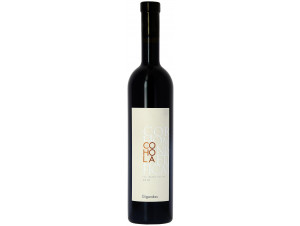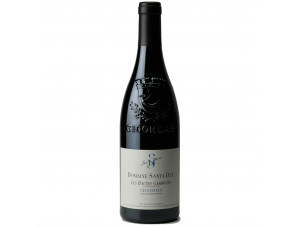You have no items in your shopping cart.
Wine Gigondas
The Gigondas appellation is located in the heart of the Vaucluse department, this large and beautiful appellation of the Southern Rhône Valley is located in the commune of the same name. These vines planted on an exceptional terroir produce a particularly rich and powerful wine. Read more on Gigondas
-
Top Selling
-
Top Selling
-
Top Selling
- -24%
Appellation Gigondas
Gigondas is one of the premier crus of the Rhône
Although the town of Gigondas was occupied by the Romans during antiquity, in the 18th century only a head of Bacchus, the Roman God of vine and wine, was found there. Viticulture developed enormously in the Middle Ages, when the region was occupied by the Princes of Orange. The town of Orange is indeed very close to that of Gigondas. Trade developed in the 15th and 16th centuries, and there is mention in the texts of wine trading. Rules were imposed on the merchants: if they sold wine wholesale to foreigners, they were obliged to sell the same wine to the local inhabitants, at the same price, even in smaller volumes.
It was not until the 19th century that the AOC was promoted by the producers of the time, and by Napoleon III, momentum soon cut short by phylloxera, which decimated the vineyard in the 1870s. In 1971, the AOC Gigondas was created, and Gigondas was the first Côtes-du-Rhône Villages to attain the rank of Cru, its reputation then no longer to be made.
The terroir of Gigondas is a blend of the Southern Rhône, with the freshness of the North
The climate of the Gigondas AOC is cooler than the majority of climates in the Rhone Valley. In fact, the climate is southern with a Provençal influence, i.e. hot, but very swept by the violent and cool Mistral wind. The exposure of the vineyard is mainly to the north and northwest. As the sunshine in the region is more than 2,800 hours per year, there is no need to optimise the exposure of the vines, even facing North, they get plenty of sun.
The composition of the soils is varied: alluvium on the terraces and sandy-clay soils at the foot of the Dentelle de Montmirail, offer great permeability, and the rare rainfall is therefore well assimilated by the soil and the vines. The slopes composed of marl and limestone cause water to run off to the soils of sand and clay. Although the hillsides therefore do not hold water, they absorb the heat of the day, offered by the sun, and redistribute it to the vines at night.
The grape varieties allowed in the AOC are Grenache, Mourvèdre and Syrah. The king grape of the appellation is Grenache, which must be present at a maximum of 50% in the blends. Syrah and Mourvèdre must also be present, and must represent at least 15% of the final blend. Other Rhône Valley grape varieties may enter the blend up to a maximum of 10%, with the exception of Carignan, which is not allowed in the Gigondas AOC. The same blending rules apply for rosés: Grenache must account for 50% of the final blend, while the other grape varieties cannot exceed 10%.
In the appellation, Grenache is fully expressed. The shade of the Dentelles de Montmirail allows it to mature slowly, without being permanently exposed to the region's baking sun. It brings to the wines tannins, body and ageing capacity. Syrah provides colour, brightness and spicy notes. Mourvèdre takes on the task of enriching the wine with more complex and subtle aromas.
Gigondas are characterised by red fruit aromas
.To the eye, the red wines of the Gigondas appellation are brilliant, the reds are ruby to garnet coloured, with beautiful bright reflections that evoke the warmth of the sun.
On the nose, the aromas of red fruits such as cherry or very ripe strawberry, or black fruits such as blackcurrant and blueberry are fully expressed, particularly in the youth of the wine. With time, notes of undergrowth and truffle also appear. These wines are indeed suitable for ageing, which will allow them to become more refined and concentrated.
On the palate, the attack is fleshy and full-bodied, revealing fruit flavours such as fig and prune, while gradually bringing in notes of pepper, garrigue, and aromatic herbs like thyme. The structure of these wines is remarkable, as is their longevity, and ageing will allow them to become rounder, and thus gain even more deliciousness.
A quick aside on rosés: they can be from pressurage or bleeding, and can be consumed between 2 and 4 years after harvest. They are fruity and mineral wines, with a more or less concentrated colour depending on the style sought.
Gigondas are a wonderful accompaniment to game
.Gigondas is particularly appreciated with red meats with a strong character, such as grilled meats, dishes in sauce or game: venison stew, hare à la royale, Provençal daube or even a simple barbecued entrecote will find a very pleasant partner in Gigondas. Matured blue-veined cheeses go very well with these wines, as do Reblochon and Maroilles.
As far as rosé is concerned, it will go well with your aperitifs, especially those based on charcuterie. It is also particularly well suited to Asian flavours, with curry and slightly spicier spices.
Discover 2 domains in Gigondas
Maison Gabriel Meffre
The Meffre house has existed since 1936 in Gigondas. The Meffre couple launched their business as wine merchants, and more than 80 years later, the generations have succeeded one another in the same spirit as at its foundation: innovation and preservation of heritage. Indeed, this House is recognised as responsible, as it not only participates in the protection and preservation of heritage, of nature, but its approach also extends to a societal aspect. Their cuvée Sainte-Catherine is particularly fine and fruity.Domaine Brusset
A family-run estate since 1947, this 70-hectare operation produces vintages in Gigondas, Rasteau, Cairanne, Côtes-du-Rhône and Ventoux. Les Hauts de Montmirail is one of their most powerful, yet round vintages, expressing aromas of blackberry and cocoa.
Vallée du Rhône appellations
Côtes-du-Rhône-Villages Laudun
Côtes-du-Rhône-Villages Massif-d'Uchaux
Côtes-du-Rhône-Villages Plan-de-Dieu
Côtes-du-Rhône-Villages Rochegude
Côtes-du-Rhône-Villages Sablet
Côtes-du-Rhône-Villages Séguret
Côtes-du-Rhône-Villages Signargues




































 TWIL - Achat de Vin
TWIL - Achat de Vin


